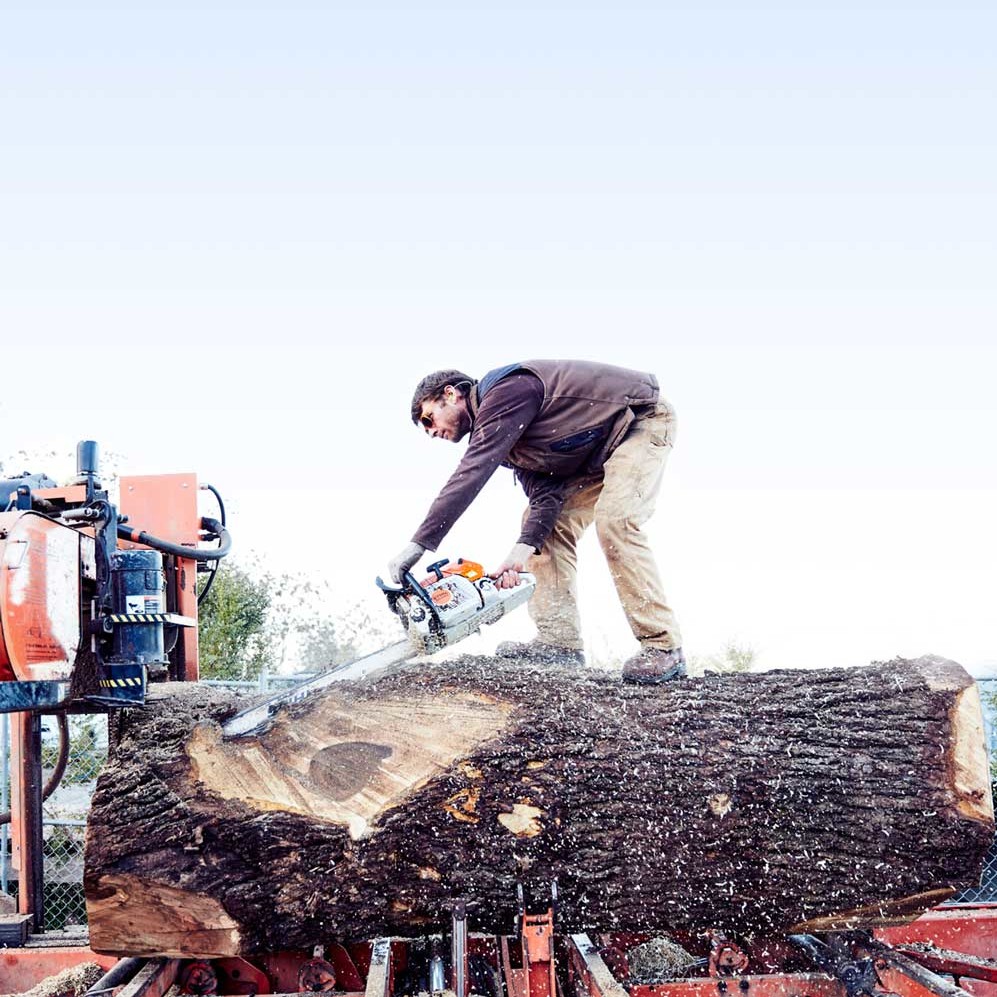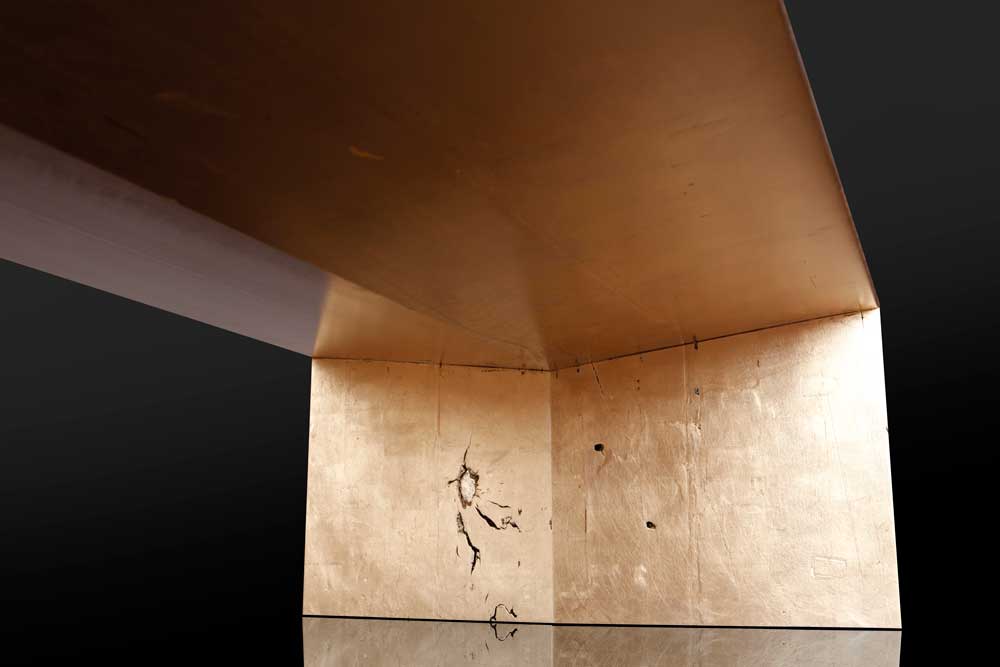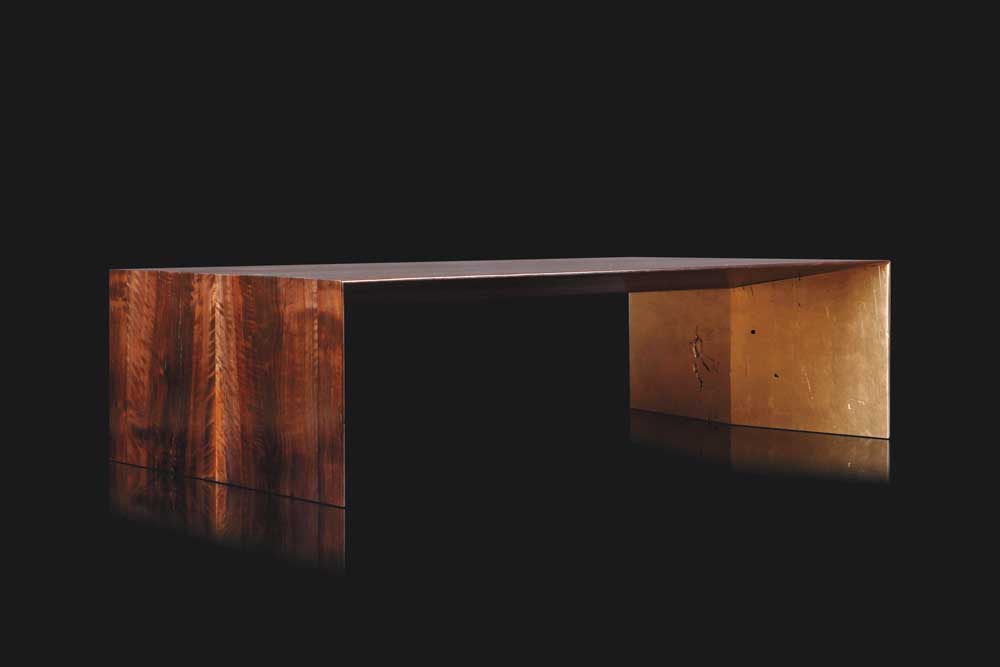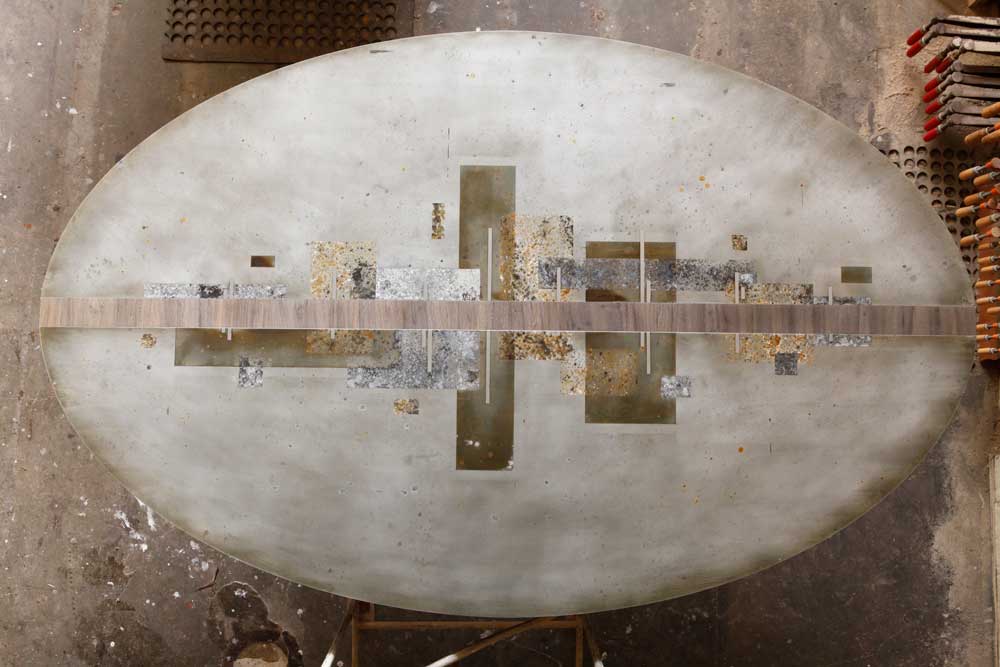SOME DAYS YOU MIGHT FIND 41-year-old Bay Area furniture maker Florian Roeper indelicately straddling a giant log, with his chain saw buzzing. Which is not exactly what he envisioned when he was in high school in Heidelberg, Germany, and dreamed of becoming a graphic designer.
The son of an Italian mother and a German father, he chose California College of the Arts in San Francisco, relatively close to Redwood City, where his father was posted by an employer during the 1980s. Although enrolled to study graphic design, Roeper stumbled upon the furniture-making woodshop at CCA “and I was hooked,” he says.

He watched students creating “art” furniture and thought he could also be doing that. It was the year 2000, when the genre was having a resurgence. “Sam Maloof’s furniture was being shown on pedestals in fancy galleries,” Roeper recalls. Encouraged, he decided that making artful furniture was his future.
Later, an apprenticeship with a master member of the California-based nonprofit Baulines Craft Guild became another turning point. Roeper learned to make craftsman-style doors of fine hardwoods that were inset with chemically etched and colored sheet metal panels. Such treated metals married to wood fascinated him and this approach became a staple after he launched Studio Roeper in 2003.
He eventually established a sawmill in Walnut Creek, and at his workshop in Alameda he now creates distinctive modern furniture of wood and metal and sometimes even resin and leather, on display in his showroom near the San Francisco Design Center. The designs are inspired by the materials and equally by the artisanal works he sees while traveling.
“I get lost in looking,” he says. “I go to churches when I am in Italy, not museums. I get my entire ‘fix’ there: paintings, masonry, woodwork and stained glass.”
Simple Romanesque churches and heavily decorative Baroque and Renaissance churches all have an equal pull.
Archways, elaborate stonework and filigreed wood are “languages” that resurface — a word here, a word there — wonderfully garbled and abstracted in his work. Roeper’s painterly, naturalistic finishes on mostly rectilinear modern furniture is his way of “balancing my old and new lives,” he says.
Working with crisp silvery zinc sheets, luxurious and warm-toned bronze and sometimes even simple brass and copper sheets attached to reclaimed woods, he creates aerial California landscapes on tabletops that sometimes have gleaming undersides that echo medieval church panels.
Roeper, working alone or at times with an assistant, can make about 20 dining and coffee tables in a year. They attract designers like Ken Fulk and Steven Gambrel, New York architect Peter Marino and firms like the Wiseman Group, who all also commission custom pieces.
Although they hardly ever contain hand carving, every object is distinctive, created with electrical and hand tools and stained, oiled, etched, gilded or lacquered by hand. But Roeper’s ultimate secret weapon is the wood — often wide boards of elm and walnut, rarely seen in typical lumberyards.
“I look for logs and trees that are salvaged locally and can be milled,” he says. “There is always more character when it is a gnarled tree from someone’s backyard versus a commercially grown tree.”
Old nails stuck in tree trunks leave blemishes; worms hollow out remarkable cavities. A slab of such wood has a history and an individual face that Roeper knows he could never replicate, and he embraces the imperfections with a kind of reverence.
“You never know what you are going to find when you cut a log, smell the wood and touch the inside,” he adds. “I always find myself disappearing into that world of wood.”
Photos courtesy of Studio Roeper.
This article originally appeared in Marin Magazine’s print edition with the headline: “A Fine Balance”.






